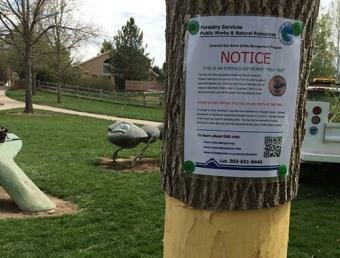A team of mathematical experts have said that 1729, which is also known as the Ramanujan-Hardy number, is linked to aspects of string theory and...

The Louisiana State University has announced that they be immediately informed in case anyone spots beetles in the state to protect Ash trees.
Boulder, Colorado, Connecticut, Wisconsin, Ill-Perrot Pincourt and Illinois are other states being affected with the beetle menace, recently.
The beetle, identified as emerald ash borer. It is a green beetle that feasts on ash barks for its survival. According to experts, these beetles are capable to killing a whole tree in a span of maximum five years, when left undetected.
The one half inch long beetle has the tendency to reproduce over bark of trees by releasing its eggs.
These eggs are not ordinary. Working in groups, they develop a feeding passageway which rather blocks water and nutrients’ supply to the tree. The beetle attack on trees is identified with big white patches. Eventually, the tree’s leaves turn pale.
Researchers had first spotted Emerald ash borers in 2002. These have now been identified across 25 states. There are none consuming these beetles, as on date, to balance out the food chain. The only way to control the infestation of these beetles is through pesticide spraying. However, it is a pricey method.
These beetles primarily attack trees in parks and in rural areas. The beetle first originated in China and gradually spread across to other areas.
Wood Johnson of the U.S. Forestry Service said, "We hope to slow the progress of the Emerald Ash Borer. And it's thought on the southern edge of the Emerald Ash Borer where population is still controlled.”









